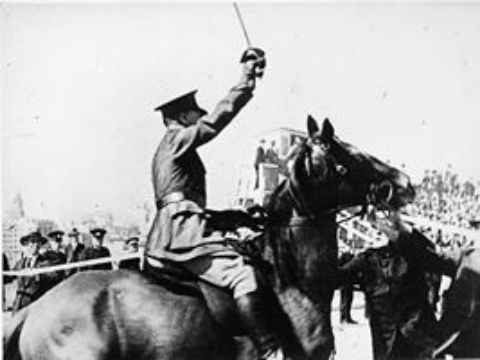- Right Wing Extremism (RWE) persistence in Australia is the result of international and domestic exchanges
- RWE adherents perpetuate a narrative which celebrates a racialised construct of Australian identity supposedly imperilled by the influence of designated ‘out-groups’
- It is significant that Australian RWE groups have never formed in isolation of the global RWE community
 A Charles Sturt University (Charles Sturt) academic argues that the historical persistence of Right Wing Extremism (RWE) in Australia is not simply the consequence of an Australian-centric white nationalism, but is the result of international and domestic exchanges.
A Charles Sturt University (Charles Sturt) academic argues that the historical persistence of Right Wing Extremism (RWE) in Australia is not simply the consequence of an Australian-centric white nationalism, but is the result of international and domestic exchanges.
Dr Kristy Campion, lecturer in terrorism studies in the Charles Sturt Australian Graduate School of Policing and Security, provides a detailed summation in her article, ‘A ‘Lunatic Fringe’? The Persistence of Right Wing Extremism in Australia’, published in a recent issue of Perspectives On Terrorism (Volume 13, Issue 2, April 2019).
“Right wing extremism in Australia is historically persistent and contemporarily well-established, with a propensity to surge in popularity,” Dr Campion said.
“The first movements emerged in the 1930s against Bolshevik Communism, and quickly established ties with ‘fellow travellers’ elsewhere in the Western world.
“While their influence diminished, their sentiment persisted in subcultural networks which also demonstrated international ties.
“RWE resurged in the 1980s, seeking to stymie pluralism and immigration.
“Some extremists travelled overseas and formed connections with international counterparts, but while their activities were suppressed by law enforcement, the sentiment continues to survive in subcultural networks.
“RWE resurfaced in the decade prior to the recent 2019 Christchurch attacks, and largely targeted ethnic Australians and members of the Muslim community.
“Currently, the RWE threat in Australia is inherently tied to extremist attitudes regarding jihadism, Muslims, and immigration.”
Dr Campion said until recently, adherents perpetuated a narrative which celebrates a racialised construct of Australian identity which is supposedly imperilled by the influence of designated ‘out-groups’.
“These out-groups were initially communists and Jews, but this circle of enemies later expanded to include immigrants and homosexuals, and then Muslims,” she said.
“It is important to note that out-groups tend to become a permanent feature.
“Contemporary groups frequently espouse hostility to ‘lefties’ and Jews on their Facebook pages, thereby demonstrating target resonance with historical groups, while their main agenda is opposition to Islam and Muslim immigrants.
“In between activity periods, RWE sentiment retreats back into the political margins to subsist in subcultural networks.
“While these groups occasionally attempt to engage in the political process, they met with limited success and ultimately only succeeded in keeping the ideas and networks alive.”
Dr Campion explained that domestic chapters of international groups, such as the Southern Cross Hammerskins, Blood and Honour, and WAU14, are suggestive of strengthening international ties in subcultural networks.
“This is important because it establishes historical persistence, and could further illuminate or explain the context behind the well-entrenched positions of contemporary RWE groups in Australia,” she said.
“It is significant that Australian RWE groups did not, and have never, formed in isolation of the global RWE community, and even in the 1930s, there was an exchange occurring of people and ideas.
“Before the Christchurch attacks of March 2019, Australia’s biggest RWE export may well have been the Odinism of Mills, which, despite having limited impact domestically, achieved significance internationally.
“In the aftermath of the recent atrocities at two mosques in Christchurch, NZ, The Great Replacement may eclipse it.
“The personal journeys of Australian RWE leaders to foreign RWE hubs, and their literature exchanges, demonstrate actual international connections, as much as their desire to create a global (white) community – a concept recently championed by the Christchurch massacre perpetrator. “With a heightened threat perception following the Christchurch attacks, it remains to be seen what impact this international exchange will have on domestic Australian RWE.”






Social
Explore the world of social